During the First World War, with the rapid increase in the number and effectiveness of German submarines, the problem of fighting them effectively became of paramount importance. The then specialists had ideas in this matter, sometimes strange, and sometimes even crazy.
The British Navy entered the Great War, completely unprepared to locate and neutralize enemy underwater units. And the problem was pressing because losses were growing at an alarming rate.
Admiral Jellicoe's worry
While in 1914 the U-boats sank only 3 merchant ships, in the following year this number was as much as 640, and in 1916 as much as 1301. At this rate of losses in the transport fleet, the island kingdom was threatened with the threat of starvation. 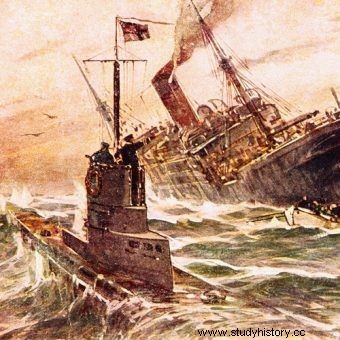
The British were aware of the gravity of the situation. As Robert K. Massie quotes in the fourth volume of the book "Steel Fortresses", Admiral John Jellicoe, commander of the Royal Navy at the time, wrote in late 1916:
The shipping situation is the most important issue. (…) Drastic measures should be taken a few months ago to contain unnecessary imports, introduce food rationing and start building new ships. Everything has to be done right now, as long as it is not too late.
British "mass roll"
The most important thing, however, was the effective combat of submarines. British navy units were almost defenseless against the attacking U-boats at the beginning of the war. In an attempt to somehow remedy this situation, willing citizens were mobilized and the vicinity of the ports began to patrol private yachts and boats.
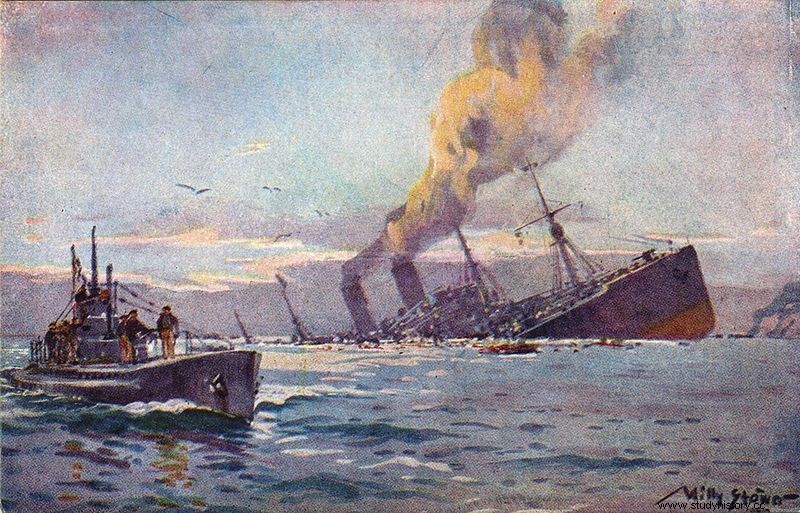
Another U-boat victim goes down. And how to fight such an opponent? Pictured is a painting by Willy Stöwer (source:public domain).
However, if they encountered an underwater enemy, they had little chance of threatening him in any way. According to the aforementioned Robert K. Massi, only 1 in 10 was armed with anything larger than a shotgun.
Among these vessels there were at least a few that carried two divers on board. One of them was equipped with a hammer and the other with a black bag. If a U-boat periscope was located, one of the divers was supposed to put the bag on it.
If it failed, another soldier was supposed to step in and smash the glass of the periscope with a hammer. There were also ideas to "arm" divers with pickaxes to punch holes in the hulls of fragile ships.
Some concepts were downright bizarre. For example, it was proposed to spill green paint on the sea surface, which by sticking to the periscope glasses was to confuse the German commander as to the depth of his unit's immersion.
It was also recommended to use extremely strong magnets to immobilize the U-boats. The command of the British fleet, perhaps in a gesture of helplessness, even went so far as to hired a clairvoyant to pinpoint the location of enemies hiding in the depths!
How to guide the seagull to the target?
The British also conducted pioneering experiments in the field of using animals for the location of submarines. Sea lions and gulls were trained in strict secrecy. The former were trained to ignore the presence of fish, but respond to the sound of the submerged U-boat, for which they were rewarded with special treats.
Works on the use of gulls were much more advanced. The task of these birds was to "bomb" the periscope with their own droppings so as to blind the German crew! The Royal Navy took the matter as seriously as possible and even assigned its own submarine to conduct trials. The project was finally suspended in August 1917.
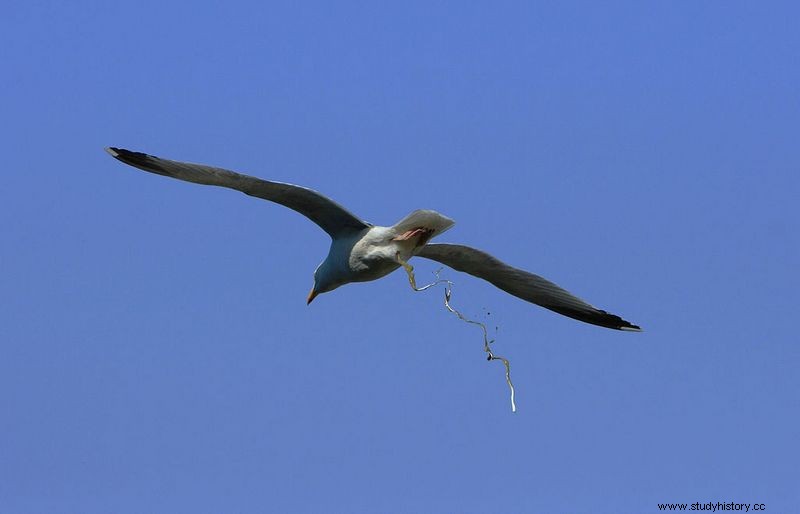
Seagull droppings as an effective weapon against U-boats? The British really did consider this possibility! (photo:Sanchezn; license CC BY-SA 3.0).
All these ideas have not been put into practice. The most effective way to destroy the U-boat was its firing or ramming by a surface ship. But here too, a great deal of luck was needed. It was rarely possible to catch a German submarine on the surface to use cannons. The low silhouette made it impossible to quickly detect and fire.
The maximum emergency dive time was about 3 minutes, and the U-boats usually managed to hide safely in the depths. In the case of ramming, the attacking ship had to be close enough to catch the disappearing enemy. Also, there was always a risk of severely damaging your own unit.
Churchill's Surprises
On June 23, 1915, approximately 60 miles north of the Firth of Forth, signalers on the U-40 submarine spotted a small fishing vessel. Confident of an easy prey, the Germans immediately headed towards him. The Taranaki, for that was the name of the ship, was stopped at a signal from the U-boat. The U-40 moved closer, waiting for the British crew to leave their unit and be able to sink it with cannon fire.
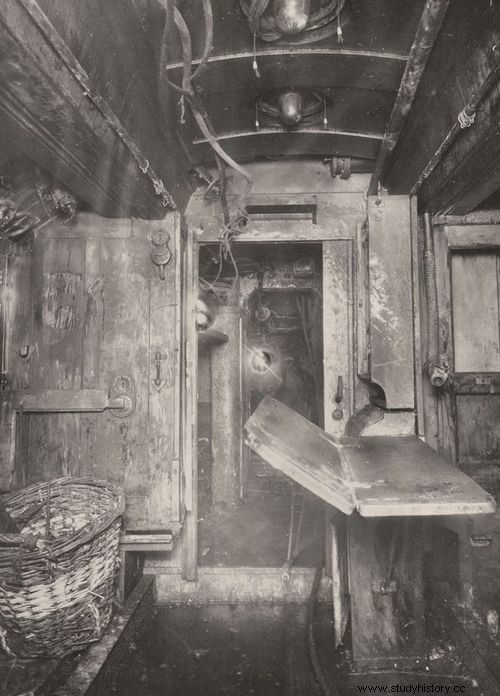
The interior of a World War I U-boat (source:public domain).
Unexpectedly, a torpedo crashed into the hull of the ship, just below the conning tower. The U-40 quickly hit the bottom. Of the sailors, only three survived, including the commander who happened to be outside in the kiosk.
As it turned out, the perpetrator of this sinking was the British submarine C-24. "Taranaki" was the bait. It towed a C-24 and was additionally connected to it by a telephone line. The commander of the British submarine was kept informed about everything by the crew of the fishing vessel.
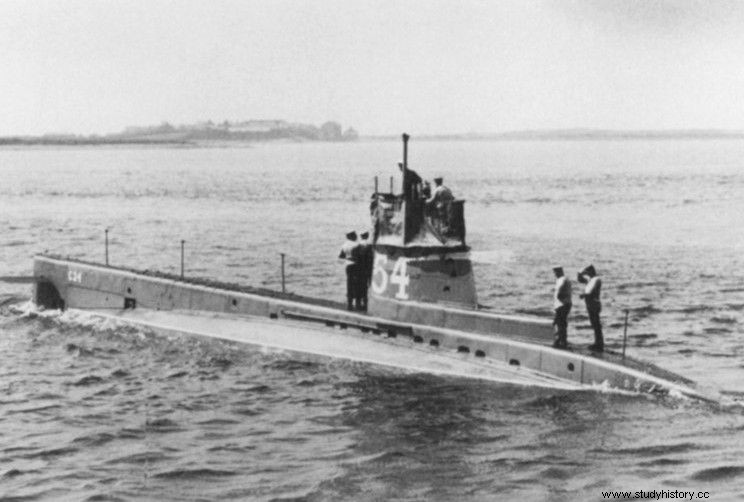
British submarine C-24. It was this unit that sent the U-40 to the bottom (source:public domain).
As Robert K. Messie wrote in the fourth volume of "Steel Fortresses": when the U-boat commander was taken aboard a trawler, he bitterly complained that his ship had been sunk as a result of a "dirty trick".
The creator of this method of combating German submarines was none other than Winston Churchill himself, who was fond of all sorts of unconventional activities. He was the First Lord of the Admiralty at the time.
Special service ships
After Churchill's departure from office, further use of the decoy-submarine tandem was abandoned. However, the very idea of using a supposedly "defenseless" anti-U-boat unit survived, only in a changed form.
The British began to use larger ships, well armed with masked cannons. Their task was also to lure the submarine out of the depths and fire at it on the surface, which is when it was most vulnerable to attack. These vessels were called Q-ships, meaning "special service ships" or "mystery ships".
The crews consisted of volunteers:officers and sailors of the British Navy. The personal status was always double. Some people manned machines, devices and weapons, and the rest were part of the so-called panic unit. Its members had to turn into real actors . As Massie writes:
Torn from their uniforms and dressed in rags (...), they grew long hair and beards, and their mustaches grew and dangled. A navy commander was walking on the bridge of his Q-ship wearing a long blonde wig. (...) Still, despite the sloppy appearance, the discipline and combat readiness of the Q-ships were greater than on the flagship of the Grand Fleet .
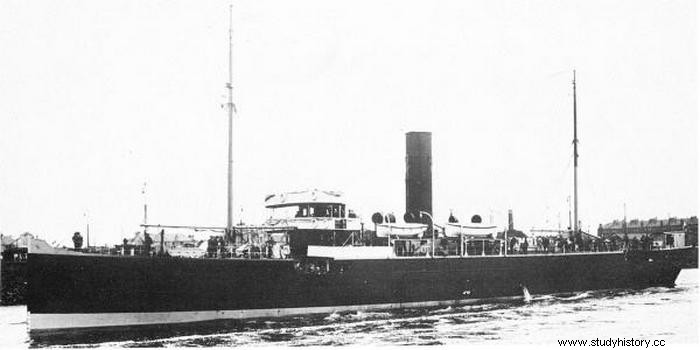
British Q-ships HMS "Tamarisk" (source:public domain).
It was a true cat and mouse game to die . Once the U-boat had revealed its position, the "panic-stricken" squad went out of their way to deceive the German captain. The seamen ran around the deck, lowering the lifeboats and leaving.
When a confident German ship came closer to fire at the "empty" and defenseless ship, her gun shields fell. The cannons fired with full force to punch as many holes as possible in the enemy unit and cause its "final dive". Throughout the war, the Q-ships sank 12 U-boats.
Inventions that changed the war at sea
Gradually, as the war progressed, the British fleet received more effective tools to combat German submarines. Noise indicators appeared, allowing the escort units to approximate the location of the U-boat.
The first sonar devices were also in the testing phase. The industry supplied anti-submarine mines as well as depth charges, which could be dropped on most units.
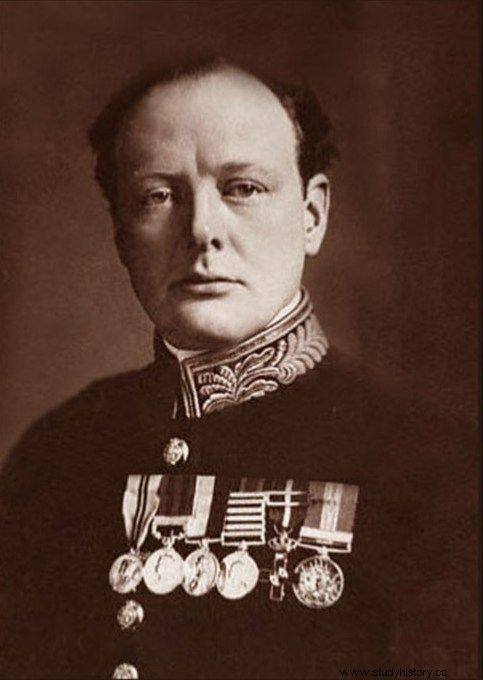
Winston Churchill as First Lord of the Admiralty pictured in 1915 (source:public domain).
A special torpedo was also constructed. Its track after launch took the form of a circle with a radius of about 200 m at a depth of 30 m. After several such torpedoes were launched, there was a high probability that at least one of them would hit the target.
Finally, aviation was involved in tracking and fighting the U-boats. It is worth remembering that most of the methods developed a hundred years ago are still valid.
